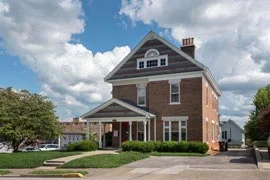If you have ever been involved in a Kentucky motor vehicle accident, you likely are familiar with the accident reports that local law enforcement officers submit, including the sketches of the accident scene that notes which vehicle ended up where and from which direction. What you may not be aware of, however, is that trained accident reconstructionists exist who can and do conduct much more in-depth accident investigations.
As explained by the Kentucky Bar Association, an accident reconstruction is similar to a crime scene investigation. Its purpose is not so much to discover who caused the accident as it is to determine exactly what happened and how it happened. To do this, the reconstructionist usually, but not always, goes to the scene as soon as possible after the accident and searches for evidence found in or on the following:
- The vehicles themselves
- The roadway
- The environment
Current technologies
Ever-expanding technologies greatly assist the reconstructionist. For example, did you know that some vehicles contain an event data recorder? Analogous to an airplane’s black box, many Ford, GMC and other vehicles have EDRs. Others have power train and/or transmission control modules. Still others have crash avoidance systems, computer-applied braking and/or blind spot assist.
Tire marks
Tire marks on the road can yield a great deal of information to a reconstructionist, such as the following:
- Indications of an overloaded truck or other vehicle
- Indications of overinflated or underinflated tires
- Indications of acceleration or deceleration prior to the crash
- Indications of an impending skid
- Indications of automatic braking system maneuvers
Scene evidence
The accident scene itself also yields invaluable evidence. Not only does it reveal the design of the roadway, it also tells the reconstructionist what kind of signage and/or road construction, if any, existed at the time of the accident. In addition, fluid and debris patterns often provide invaluable clues. The scene likewise reveals nearby stores, homes and other buildings with security cameras that may have recorded the accident.
Unfortunately, the main problem with an accident scene is its vulnerability to disturbance by fire department, emergency responder, police, ambulance and tow truck vehicles as well as by the people who work for these organizations and companies. Given that the immediate accident objectives are to find, assess and care for injured victims and reopen the road to regular traffic as soon as possible, it is not difficult to see that crucial evidence can, and often does, become destroyed, moved, or otherwise compromised.
Despite such problems, however, a thorough accident reconstruction is your best way of determining fault whenever you are involved in an accident. While this educational information is not legal advice, it can help you understand the accident reconstruction process.
